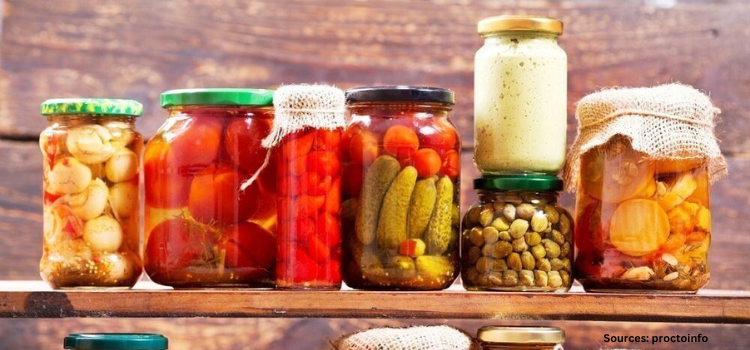
Organic Food Market by Product (Fruits, Vegetable, Beverages, Dairy Products, Meat, Poultry, Frozen & Processed Foods, and Others), by Process (Processed and Unprocessed), and by Packaging Type (Fresh, Frozen, and Dried), by Distributional channel (Offline, and Online) – Global Opportunity Analysis and Industry Forecast 2023-2030
US Tariff Impact on Organic Food Market
Trump Tariffs Are Reshaping Global Business
Market Definition
The global Organic Food Market size was valued at USD 220.05 million in 2022 and is predicted to reach USD 604.83 million by 2030 with a CAGR of 13.48% from 2023-2030. Organic food refers to agricultural products that minimize the use of synthetic chemicals, such as pesticides, fertilizers, and genetically modified organisms (GMOs).
Instead, organic farmers use natural fertilizers, such as compost and manure, and employ techniques that include crop rotation and biological pest control to maintain soil fertility, control pests, and promote overall sustainability. The primary goal of organic food production is to provide consumers with food that is healthier and environmentally friendly, which are produced in a sustainable manner.
Market Dynamics and Trends
The increasing number of chemical poisoning cases in different parts of the world has contributed to the growing demand for the organic food. Consumers are becoming more aware of the potential risks associated with conventional farming practices that involve the use of synthetic pesticides, herbicides, and fertilizers. As organic food is produced without these harmful chemicals which has led to a shift in consumer preferences towards organic products. For instance, in May 2022, the World Health Organization (WHO) published a report stating that approximately 600 million individuals, which accounts for nearly one in ten people globally, experience illness as a result of consuming contaminated food.
In addition, the demand for organic food is increasing due to the rise in consumer awareness towards organic food. The growing awareness of healthy lifestyle among the larger section of the population, growing fitness trends, and a shift toward healthy product consumption such as organic fruit & vegetable, juice & syrups over other confectionary foods is expected to boost the growth of the market. For instance, in December 2022, Amazon Retail India launched new farmer collection centre for organic fruits and vegetables to provide certification in Pune, Maharashtra. The new facility will help Amazon to expand its sourcing network for organic produce and meet the growing demand for organic food in India. Furthermore, the growth of the online retailers around the globe that offer organic products at discounted rates while promoting health consciousness among consumers thrives the growth of the organic food industry.
However, organic food generally cost 25-30% more than the conventional foods is restraining the organic food market growth. On the contrary introduction of vertical farming that utilize advanced technologies such as hydroponics, aeroponics, and LED lighting are expected to create ample growth opportunities for the market in the coming years.
Market Segmentations and Scope of the Study
The organic food market report is segmented on the basis of product, process, distributional channel, and regional. On the basis of product, the market is divided into fruits, vegetables, beverages, dairy products, meat, poultry, frozen & processed foods, and others. On the basis of process, the market is bifurcated into processed and unprocessed. On the basis of distribution channel, the market is classified into supermarket, hypermarket, convenience store, and online. Regional breakdown and analysis of each of the aforesaid segments includes regions comprising of North America, Europe, Asia - Pacific and Row.
Geographical Analysis
North America dominates the global organic food market share and is potently expected to remain dominant in the market during the forecast period. This is attributed to increasing number of health-conscious and environmentally friendly consumers who are shifting their food choice priorities to focus on consuming healthier foods. According to the Organic Trade Association (OTA), the U.S. organic foods and vegetables sales reached at USD 62 billion in 2021, foods with organic and natural labels are witnessing an increased demand compared to other conventionally grown food products, including fruits and vegetables in 2020.
Moreover, rising collaboration among key players to promote the organic food products on the e-commerce platforms such as Amazon and Walmart are expected to drive the organic food market in this region. For instance, in January 2022, Eat Well Group Inc. expanded the distribution of Amara Organic Foods to Walmart.com and Walmart Canada on e-commerce platform. Amara Organic Foods has access to many of North America's leading big-box retailers, including Whole Foods, Sprouts Farmer's Market and Loblaws, which can help them to reach these organic food products to consumers in a wide range.
On the other hand, Asia Pacific is expected to show a steady rise in the organic food market for the forecasted period as companies are extensively focusing on advanced technologies such as blockchain and artificial intelligence to promote healthier food options while further supporting other organic brands operating in this industry. For instance, in November 2020, Integrated Management Systems (IMS) introduced OrgHive, application developed to assist Chinese consumers in making healthier food choices that supports organic brands catering the mainland Chinese market. This application uses blockchain technology to enhance transparency and reliability to shoppers concerned about the safety and origin of food products.
Furthermore, the rapidly increasing production of the global market in the developing countries such as India, Indonesia, and Thailand drive the growth of organic food in the region. According to Ministry of Agriculture, the export of Indian organic produce grew by 25% in 2022, reaching a value of USD 2.4 billion. The top export destinations for Indian organic produce include the United States, the European Union, and Japan. The data also states that on an average, India’s organic product export is valued at USD 827 million every year
Competitive Landscape
The organic food industry is comprised of the various market players such as General Mills (Annie's Homegrown), Hain Celestial Group, Amy's Kitchen, Danone, Organic Valley, Newman's Own, Horizon Organic Dairy, Ambrosia Organic Farm, Dole Food Company, Lakewood Organic, Nature Bio-Foods Ltd., Phalada Agro Research, Foundations Private Limited, Nature Pearls Private Limited, Arla Foods amba, Clif Bar & Company, and others. These market players are adopting various strategies such as product launches and business expansion across various regions to maintain their dominance in the global market.
For instance, in February 2023, Kaneka Corporation launched a new organic product, “Pur Natur Organic Yogurt Plain”. The product will be sold through its affiliate company Kaneka Shokuhin Co., at organic specialty stores, supermarkets, food delivery services, and the Kaneka Online Shop. The product is made from organic raw milk from Betsukai Wellness Farm a dedicated organic farm that was established in 2021 and which acquired organic JAS certification in December 2022.
For instance, in January 2022, Sresta Natural Bioproducts launched Draft red herring prospectus (DRHP) with SEBI to begin its initial public offering (IPO). Under this the Hyderabad based Sresta Natural Bioproducts have grant 24 mantra organic that involves a variety of packaged food products under this title cooking essential and dry fruits.
Moreover, in April 2021, United Natural Foods Inc (UNFI) launched the community market place, a business-to-business commerce solution for the company to expand placement with UNFI clients. Community market place rationalise with UNFI customers have update the brand with grocery wholesalers by permitting thousands of emerging products not obtaining in UNFI distribution centre. It would be ordered in the UNFI’s Easy option website and shipped directly to the retail customers of the United States.
Key Benefits
-
The report provides quantitative analysis and estimations of the organic food market from 2023 to 2030, which assists in identifying the prevailing market opportunities.
-
The study comprises a deep dive analysis of the organic food market including the current and future trends to depict prevalent investment pockets in the market.
-
Information related to key drivers, restraints, and opportunities and their impact on the global market is provided in the report.
-
Competitive analysis of the players, along with their market share is provided in the report.
-
SWOT analysis and Porters Five Forces model is elaborated in the study.
-
Value chain analysis in the market study provides a clear picture of roles of stakeholders.
Organic Food Market Key Segments
By Product
-
Fruits
-
Vegetable
-
Beverages
-
Dairy Products
-
Meat
-
Poultry
-
Frozen & Processed Foods
-
Others
By Process
-
Processed
-
Unprocessed
By Packaging Type
-
Fresh
-
Frozen
-
Dried
By Distributional channel
-
Offline
-
Supermarket
-
Hypermarket
-
Convenience Store
-
Speciality Store
-
-
Online
By Region
-
North America
-
U.S.
-
Canada
-
Mexico
-
-
Europe
-
UK
-
Germany
-
France
-
Italy
-
Spain
-
Denmark
-
Netherlands
-
Finland
-
Sweden
-
Norway
-
Russia
-
Rest of Europe
-
-
Asia-Pacific
-
China
-
Japan
-
India
-
South Korea
-
Australia
-
Indonesia
-
Singapore
-
Taiwan
-
Thailand
-
Rest of Asia-Pacific
-
-
RoW
-
Latin America
-
Middle East
-
Africa
-
Key Players
-
General Mills (Annie's Homegrown)
-
Hain Celestial Group
-
Amy's Kitchen
-
Danone
-
Organic Valley
-
Newman's Own
-
Horizon Organic Dairy
-
Ambrosia Organic Farm
-
Dole Food Company
-
Lakewood Organic
-
Nature Bio-Foods Ltd.
-
Phalada Agro Research Foundations Private Limited
-
Nature Pearls Private Limited
-
Arla Foods amba
-
Clif Bar & Company

















 Speak to Our Analyst
Speak to Our Analyst





















